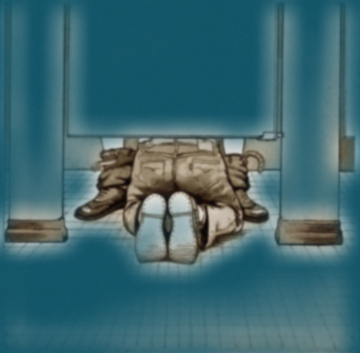Unpacking the Red Line: A multiplicity of waste epistemologies found at the traffic jam
by Sofia Vivanco Airaghi
In many cities across the world, and particularly in Mexico City, the traffic jam is quite the phenomenon. The traffic jam is central in the daily discourse, and often shapes the ways in which people move about the city and structure their days. As it becomes such an obstacle, people try to work around it, since it is frustrating to work through it. I have chosen to focus on the traffic bottleneck along the edge of Chapultepec Park and the traffic going in and out of Santa Fe. I want to observe, document, and interact with the traffic jam and the people at this site, both in cars and not. I see this project as a multi-disciplinary exploration of the multi-faceted phenomenon of waste. After completing field-work and site observations I will compile the findings and use them to create a map representing the complexities of transportation at this site. I want to do an analysis of the traffic congestion and document the different ways people travel through this space. I wish to incorporate collage and graphic design techniques to make the map more dynamic and visually capturing. I also want to create an audio documentary piece that re-creates the dynamic soundscape of the site and features the voices and stories of people talking about the phenomenon of the traffic jam. By using images from the #traficodf and adding my own, I will be actively engaging with the social media dialogue around the traffic jam and looking at the selfie as a byproduct of the traffic jam.
Av. Constituyentes
Waste, el Residuo: The Societal Use of (Public) Bathrooms
by Guillermo Alcauter

Mi
material de análisis es el residuo de la ciudad de México: “waste.” Pero decidí enfocarme en una parte del residuo: los baños públicos. La locación por la cual mucha de mi investigación tomara lugar será en la Zona Rosa. En mi opinión, los baños son parte de lo que usamos cada día para deshacernos de nuestro propio residuo. Y en sí, un baño presenta un contraste de elementos bastante interesante, donde uno usa un espacio que es considerado público para poder realizar una acción privada—el excremento. Es por esta simple correlación entre lo que es público y privado que quiero explorar los baños hechos públicos que son proveídos por lugares como Sanborns o VIP’s.
Para hacer esto, tendré que investigar el diseño, la locación, y la cantidad de veces en que estos baños son visitados por las masas. Necesitare analizar estos lugares vía imágenes, dibujos, chats, y entrevistas, para entender como un servicio, al cual todos damos por ser disponible, puede dictar la manera en que nosotros navegamos un espacio. Cuál es la importancia en el diseño y locación de los baños? Son solamente utilizados para deshacernos de nuestro residuo corporal o hay otras razones por las cuales los baños son un aspecto importante en un espacio público?